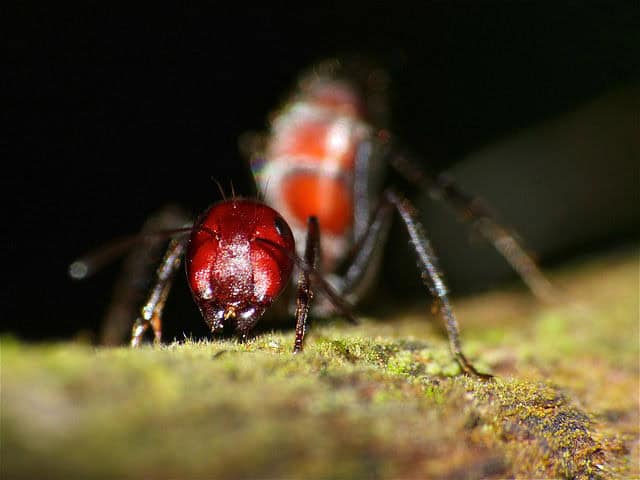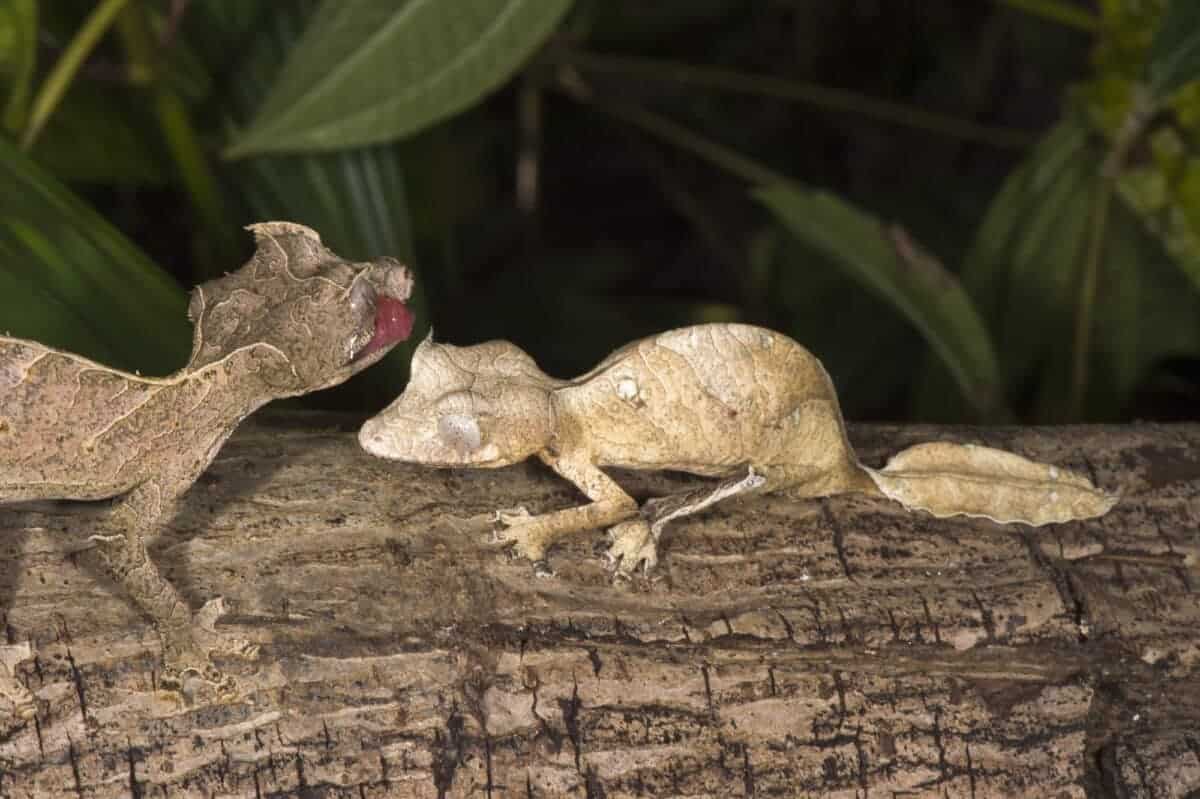In the wild, survival often hinges on an animal’s ability to defend itself against predators. While some creatures opt for speed or strength, others have developed bizarre and ingenious defensive tactics to evade danger. These unconventional methods range from chemical warfare to elaborate camouflage, showcasing the incredible diversity and adaptability of the animal kingdom. Let’s delve into the world of wildlife to uncover eight animals with the strangest defensive tactics ever seen.
1. Bombardier Beetle

The bombardier beetle is a small, unassuming insect that packs a powerful punch when threatened. These beetles are capable of ejecting hot, noxious chemicals from their abdomen, creating a small explosion. The beetle combines two chemicals—hydrogen peroxide and hydroquinone—in a special reaction chamber. When mixed, these chemicals react vigorously, reaching temperatures near 100 degrees Celsius, and blast out a scorching spray at their attacker. This unique defense mechanism deters predators and keeps the bombardier beetle safe from harm.
2. Hagfish

In the dark depths of the ocean, the hagfish employs a defense strategy that is both fascinating and grotesque. When threatened, this eel-like marine creature releases copious amounts of slime from special glands in its skin. The slime rapidly expands upon contact with water, creating a slippery and suffocating barrier that can clog the gills of predatory fish. This gooey defense allows the hagfish to slip away or suffocate its attacker, ensuring its own escape.
3. Malaysian Exploding Ant

Some animals go to extreme lengths to protect their colonies, and the Malaysian exploding ant is a prime example. Known scientifically as Colobopsis saundersi, this ant has a unique defensive mechanism: self-explosion. When faced with a threat, these ants rupture their own bodies to release a sticky, corrosive substance from special glands. This sacrifice, known as autothysis, can immobilize or deter predators, effectively protecting the colony at the cost of the individual ant’s life.
4. Texas Horned Lizard

The Texas horned lizard boasts one of the most unusual defense mechanisms in the reptile world. When threatened, it can shoot a stream of blood from its eyes. This blood-squirting tactic not only confuses predators but also contains foul-tasting compounds that deter specific predators such as canines. This allows the lizard to make a quick getaway while the predator is distracted or repelled.
5. Opossum

The opossum is famous for its theatrical defense mechanism known as playing dead or “playing possum.” When confronted by a predator, an opossum will collapse, become stiff, and exude a foul-smelling fluid from its anal glands to mimic the odor of a decaying animal. This convincingly lifeless state can last for several hours, discouraging predators who prefer live prey. Once the danger passes, the opossum will “wake up” and continue on its way.
6. Sea Cucumber

Sea cucumbers are soft-bodied marine creatures with a remarkable defense strategy: evisceration. When threatened, some sea cucumber species expel their internal organs through their anus. These sticky, toxic organs can entangle or deter predators. Remarkably, sea cucumbers have the ability to regenerate their lost organs over time. This sacrificial defense is both unusual and effective in the dynamic environment of the ocean floor.
7. Leaf-Tailed Gecko

The Madagascar leaf-tailed gecko is a master of camouflage, using its appearance as a primary defensive tactic. Its body resembles a withered leaf, complete with veins and irregular edges, allowing it to blend seamlessly into the forest environment. By staying motionless and using its cryptic coloration, this gecko can avoid detection by predators. This natural disguise is a testament to how some animals have evolved to become nearly invisible to evade threats.
8. Pufferfish

The pufferfish is equipped with a dual-layered defense mechanism. When threatened, the pufferfish rapidly ingests water (or air when out of the water) to inflate its body into a spiky, spherical shape that is difficult for predators to swallow. In addition to this physical transformation, many pufferfish species possess tetrodotoxin, a potent neurotoxin that can be fatal to would-be predators. This combination of inflation and toxicity makes the pufferfish a formidable opponent despite its initial vulnerability.
Conclusion

The animal kingdom is full of fascinating and bizarre defensive tactics that underscore the creativity of evolution. From chemical warfare to elaborate mimicry and self-sacrifice, these strategies highlight the lengths to which creatures will go to ensure their survival. Understanding these unique mechanisms not only enriches our appreciation for wildlife but also offers insights into the evolutionary pressures that shape the natural world.
- The Most Unique Fish Found in the Great Lakes of Illinois - August 22, 2025
- The Most Dangerous River in the US—And Why It’s Not What You Expect - August 22, 2025
- Why Michigan’s Wolves Are Expanding Beyond Their Protected Areas - August 22, 2025

